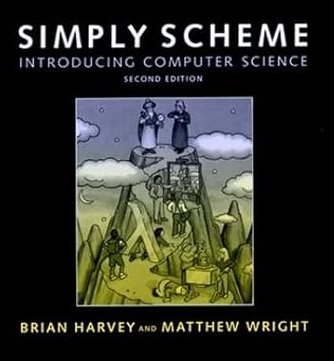- Регистрация
- 27 Авг 2018
- Сообщения
- 37,500
- Реакции
- 534,405
- Тема Автор Вы автор данного материала? |
- #1

This book works hard to make the somewhat tricky ideas of Scheme accessible. This tutorial stresses small sections on key language features, from basic functions, variables, and onward to recursion and other functional programming concepts. While languages like C++ and Java use objects to model data, Scheme programmers break a problem down into functions. The art--and elegance--of problem solving in Scheme comes from applying recursion and other design concepts.
Should programming be a matter of learning where to put the semicolon and goto? According to Harvey and Wright, absolutely not. Programming, especially when you're starting off, is about the big picture, learning how to use your imagination and not your grammar. The authors use Scheme, a dialect of Lisp, as their base. Scheme and Lisp are symbolic programs that let you create programs that will write programs. Exercises throughout with Scheme help you get up to speed quickly and even have a good time. The first half of the book makes you comfortable with functions, leading you to projects involving bridge games and tic-tac-toe. In the second half, you deal with recursion, abstraction, files, and vectors. By the end of these chapters, you're ready to use Scheme to tackle databases and spreadsheets.
Simply Scheme proves that programming can be accessible as long as it stimulates, rather than deadens, the imagination. This book will give you a sense of the inner workings of computer applications like no other.
Though not often used in business, Scheme and its cousin Common Lisp (which the book describes in an appendix) are still favored by computer scientists, for example, in artificial intelligence research. Simple Scheme succeeds in making a difficult programming language both approachable and accessible. It's a valuable resource to any computer science student who is taking Scheme on for the first time.
About the Authors
- Brian Harvey is Lecturer in the Computer Science Division, University of California, Berkeley. He is the author of Computer Science Logo Style (MIT Press 1997).
- Matthew Wright is a Musical Applications Programmer at the Center for New Music and Audio Technologies, University of California, Berkeley.
DOWNLOAD:


